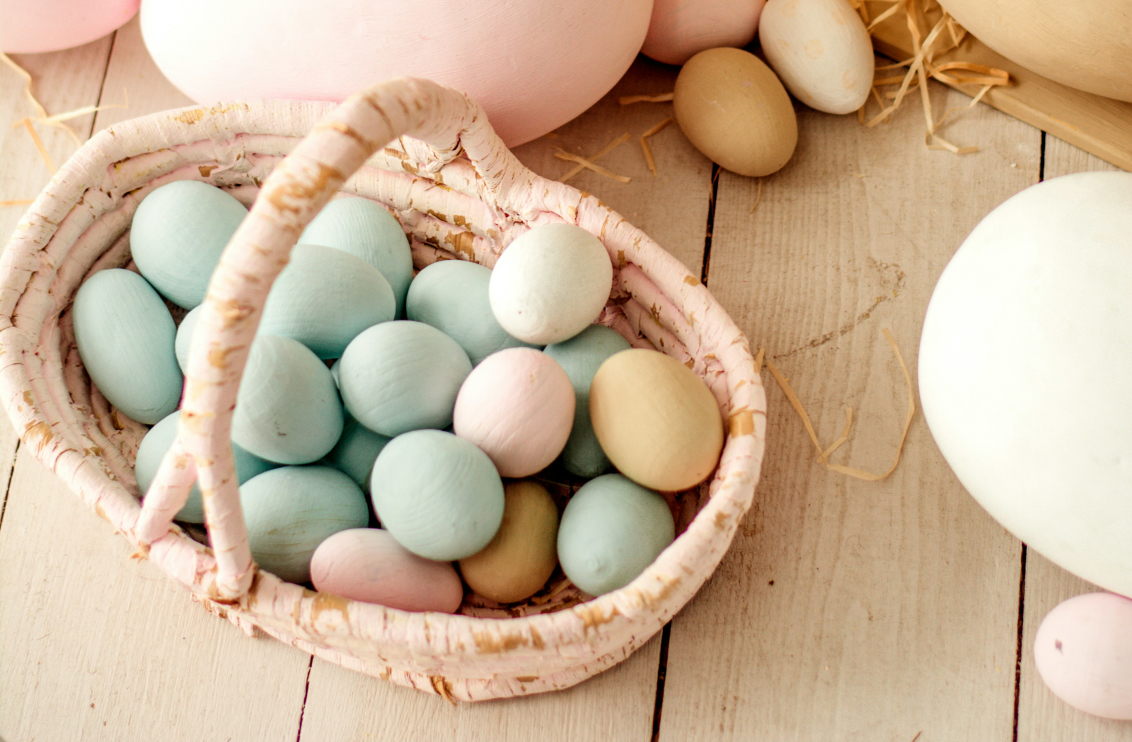
Easter egg painting is a great excuse to get creative and have fun, and there are countless ways to display your DIY creations as part of your Easter home décor. Whether you’re a seasoned artist or a total beginner, it’s easy to achieve egg-cellent results and experiment with different designs using acrylic, watercolour, or gouache paints.
We've got five inspiring Easter egg painting ideas to help you get started, from classic flowers and bunnies to metallic accents and abstract patterns. These techniques are perfect for all skill levels, so you can choose the project that suits you best or even try them all!
Gather up your supplies, roll up your sleeves, and get ready to impress friends and family with your Easter egg decorating skills.
Before you get started, make sure you have all the essential materials:
- Eggs (hard-boiled or blown out)
- Paints (acrylic, metallic acrylic, watercolour, or gouache). Need to stock up? Shop our selection!
- Coloured pencils, watercolour pencils, or metallic pencils
- Paintbrushes (soft round fine-tipped brushes work best for details) or brush pens
- Water cup for rinsing brushes
- Paper towels or sponge for blotting brushes
Optional:
- Soft 2B pencil for sketching designs before painting
- Palette for mixing colours
Preparation tips:
- Protect your workspace with newspaper or a disposable cloth.
- Ensure hard-boiled eggs are completely cooled before painting.
- If using raw eggs, gently blow out the contents by making small holes at the top and bottom of the shell and blowing through one of the holes. Blow the egg into a bowl and save it for later to make scrambled eggs or do some baking!
Painting tips:
- Use broad strokes for covering larger areas and finer brushes for adding detail.
- When using watercolours or gouache, add a touch of washing-up liquid to help the paint adhere to the egg surface.
- Work efficiently with acrylic paints as they dry quickly.
- Speed up the drying process using a hairdryer on a low setting.
- Preserve your painted Easter eggs by applying a clear varnish or some hairspray.
Flowers
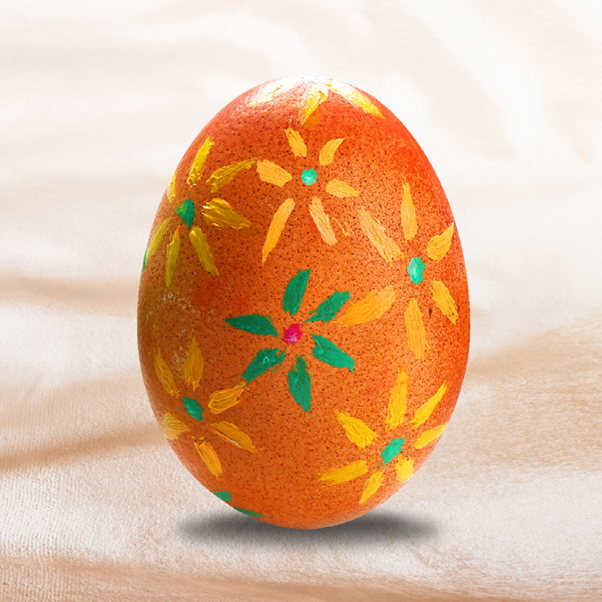
Recommended media
Paints: acrylic, metallic acrylic, watercolour, gouache
Pencils: coloured pencils, watercolour pencils
How-to:
- Sketch on your flowers with a soft 2B pencil.
- Carefully paint or pencil your flowers onto the egg.
- If using paint, allow the egg to dry completely before adding any more layers or details. Acrylics are opaque and easy to layer.
Abstract Patterns
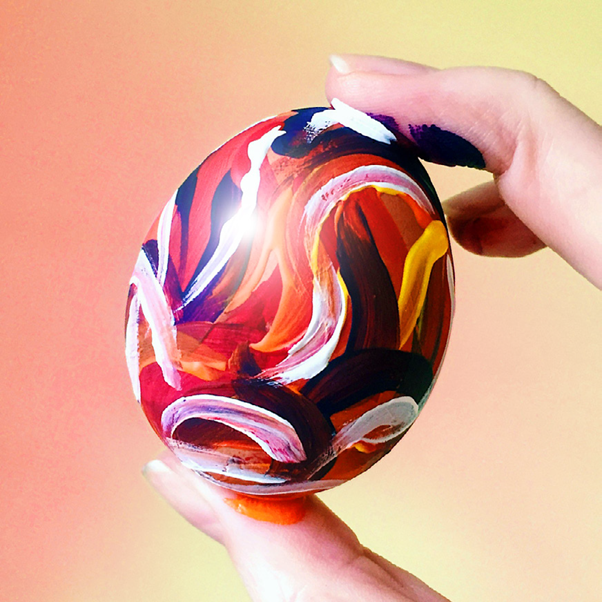
Recommended media
Paints: acrylic, metallic acrylic, watercolour, gouache
Pencils: coloured pencils, watercolour pencils
How-to:
- Start with a dark base coat of acrylic paint and let it dry.
- Build up layers with colour, shapes, and forms to create your desired effect. Have fun and experiment!
- Allow the painted egg to dry completely after each layer.
Metallic
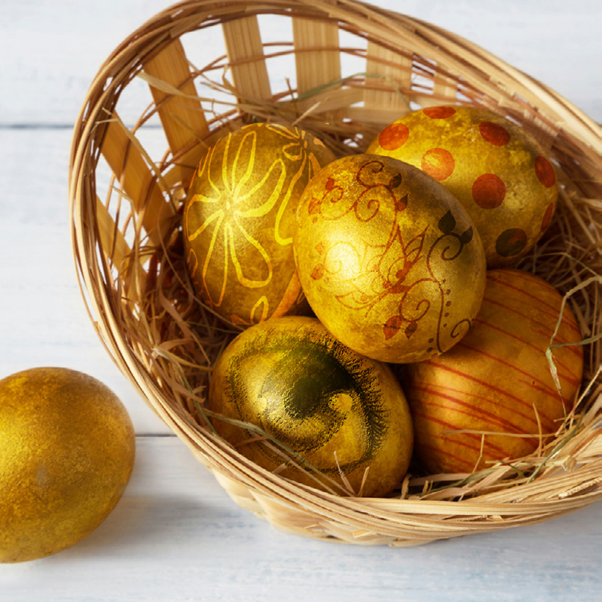
Recommended media
Paints: metallic acrylic
Pencils: metallic pencils
How-to:
- Create a luxurious look by applying a base coat of your chosen metallic colour.
- Once dry, sketch on your design with a soft 2B pencil.
- Add patterns and details using metallic paints, metallic pencils, or coloured pencils.
Easter Bunny
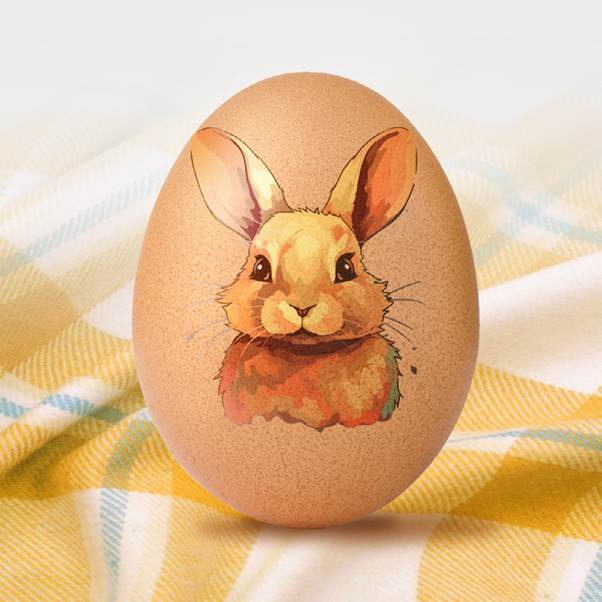
Recommended media
Paints: acrylic, watercolour, gouache
Pencils: coloured pencils, watercolour pencils
How-to:
- Sketch out your bunny with a soft 2B pencil.
- Apply light base tones thinly as an “undercolour”.
- Build colours to add definition and dimension. Try using coloured or watercolour pencils for detail work.
- Let the painted egg dry completely after each stage. Use watercolour paints for a softer, more delicate effect, and acrylic paints to create opaque layers.
Pictures and Patterns
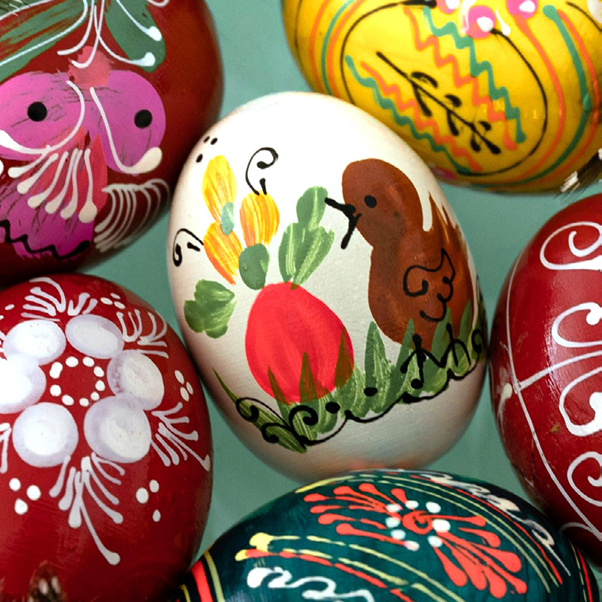
Recommended media
Paints: acrylic, metallic acrylic, watercolour, gouache
Pencils: coloured pencils, watercolour pencils, metallic pencils
How-to:
- Apply a painted base coat and allow it to dry.
- Sketch your picture or pattern onto the base coat with a soft 2B pencil.
- Introduce lighter base tones as an “undercolour” and let it dry.
- Continue building colours for definition and dimension, allowing any paint to dry completely after each stage. Try layering with acrylic paints and experimenting with drybrush techniques for unique effects.
Once you’re done creating and your designs are all dry, apply your chosen sealant and showcase them however you’d like. You could try displaying your painted eggs in a basket, vase, or glass dish to make a beautiful table centrepiece, organize them in a ceramic egg tray, or use ribbon and hot glue to hang them on branches and make your own Easter egg tree.
If you enjoyed this fun Easter art activity, don’t forget to share your creations with us on Instagram! Tag @castleartsofficial and use #castlearts to show off your egg-citing DIY decorations.



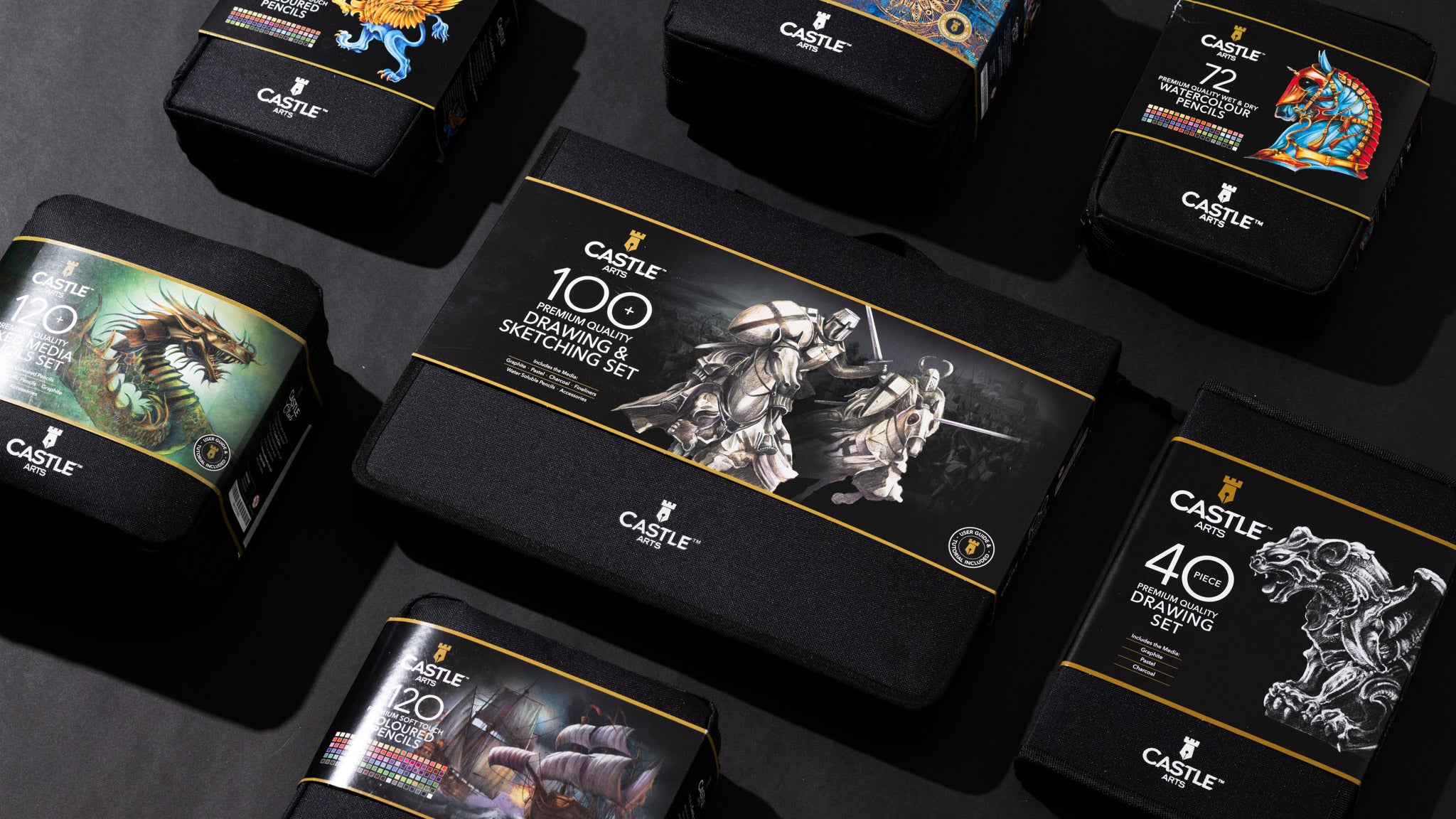
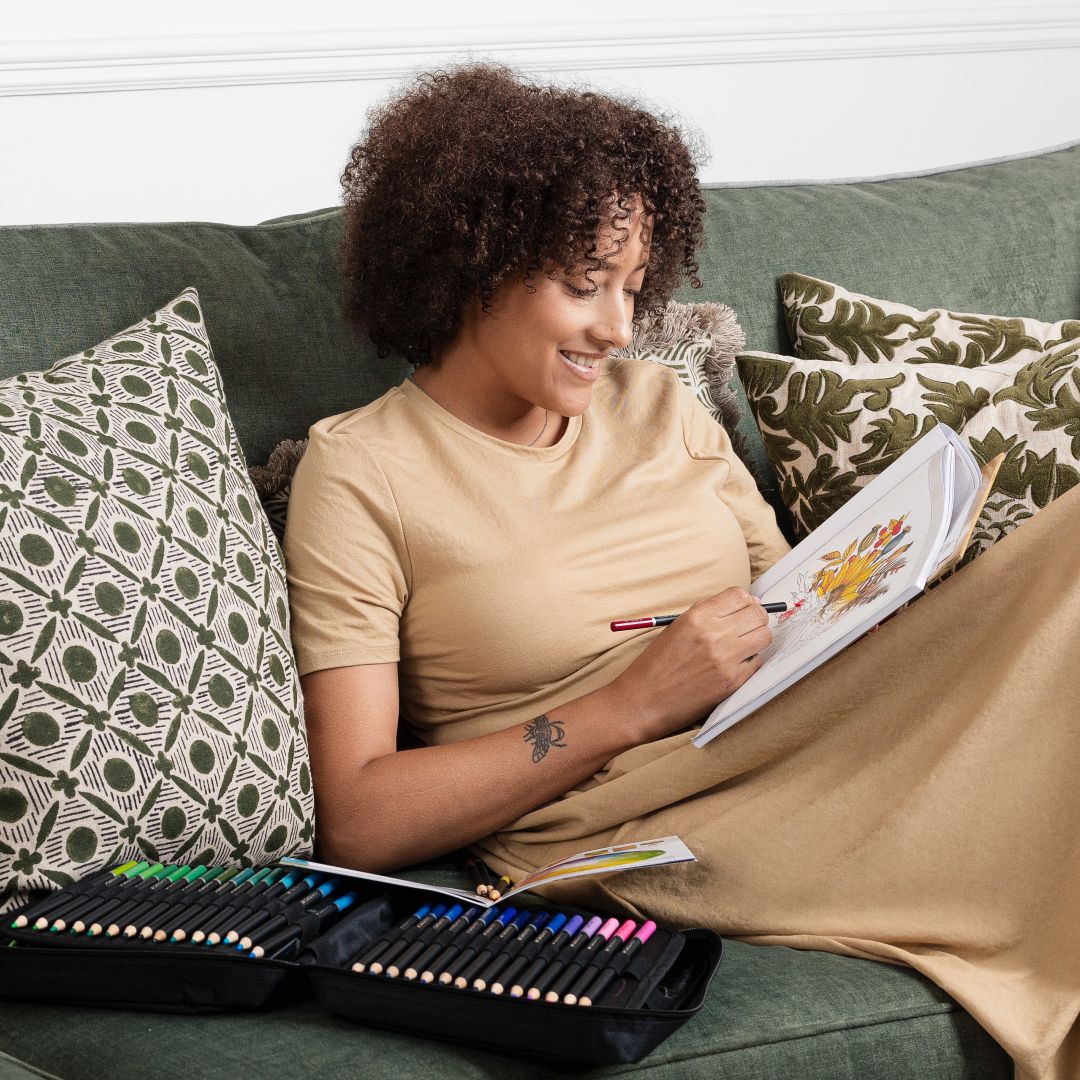

Share: